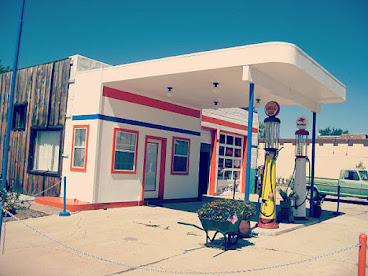Fueling in an Electric World: Why It’s Time to Rethink the Gas Station Model - Mina Gorgyos
Change is inevitable. New technologies have made our lives easier, more convenient and arguably better than they were even two decades ago. You may remember being tethered to a landline telephone for hours while awaiting an important call. Perhaps you still cringe at memories of using paper and pencil to make calculations during past tax seasons. You might even feel a hint of nostalgia about a trip to the record store to buy your favorite band’s latest album. But there is one thing we rely on every day that hasn’t changed much since its invention nearly a century and a half ago: the automobile.
From the very beginning of motorized transportation, cars have been powered by the internal combustion engine (ICE), a contraption straight out of the fiery forges and bellowing smoke of the industrial age. While communication and information technologies have long since advanced to reflect the world we live in today, the “modern” car has been frustratingly slow to evolve. Until now. Electric vehicles (EVs) are set to enter the 21st century mainstream, revolutionizing transportation forever. But there’s still one behavior that may be even more difficult to shake than our century-old addiction to fossil fuels: the trip to a fueling station.
With the rise of EVs, the gas station model should become a relic of a bygone era, but you wouldn’t know it from all the media emphasis on DC fast (or rapid) charging. Many pundits insist that, absent fast chargers on every city block and highway off-ramp, our streets will be strewn with stranded EV drivers who ran out of juice. But as any current EV driver can tell you (and I’ve happily been one since 2011), that’s simply not the case. It’s time to set the record straight.
Fast charging has its place in the EV charging ecosystem — for instance, if you’re on a road trip, you manage a depot of electric delivery vans, or you drive long-haul for one of the many rapidly electrifying fleets. But it’s rarely cost effective and nearly always unnecessary for everyday driving. A recent Consumer Reports analysis found that the average EV driver needs to access public fast charging just six times each year. Compare that with the roughly 50 times an ICE driver must fill up annually, at an average of 15 minutes per stop.
So, how do most EV drivers charge? When they’re not driving, of course! Since the typical passenger car is parked around 95% of the time (usually at home or work), it would be incredibly inefficient to drive around seeking fast charging, which still takes longer to fuel than with gas. Because of the higher infrastructure and electricity costs associated with it, DC fast charging isn’t very economical for the average driver either. Today’s EV drivers using mostly Level 2 chargers save 60% on fuel compared with their ICE-driving counterparts, a benefit that would largely be wiped out if they relied on public fast chargers for routine fueling.


Comments
Post a Comment